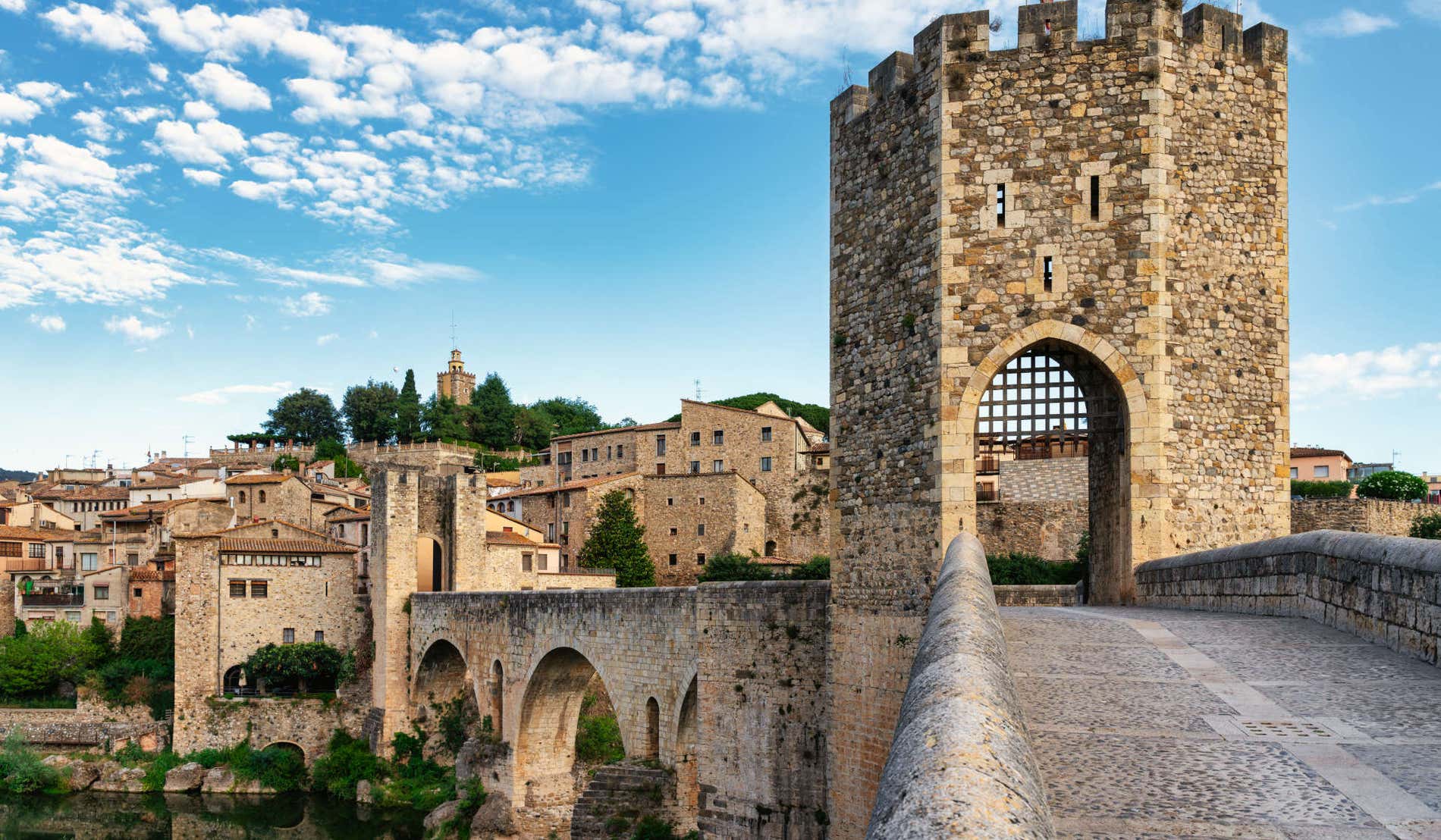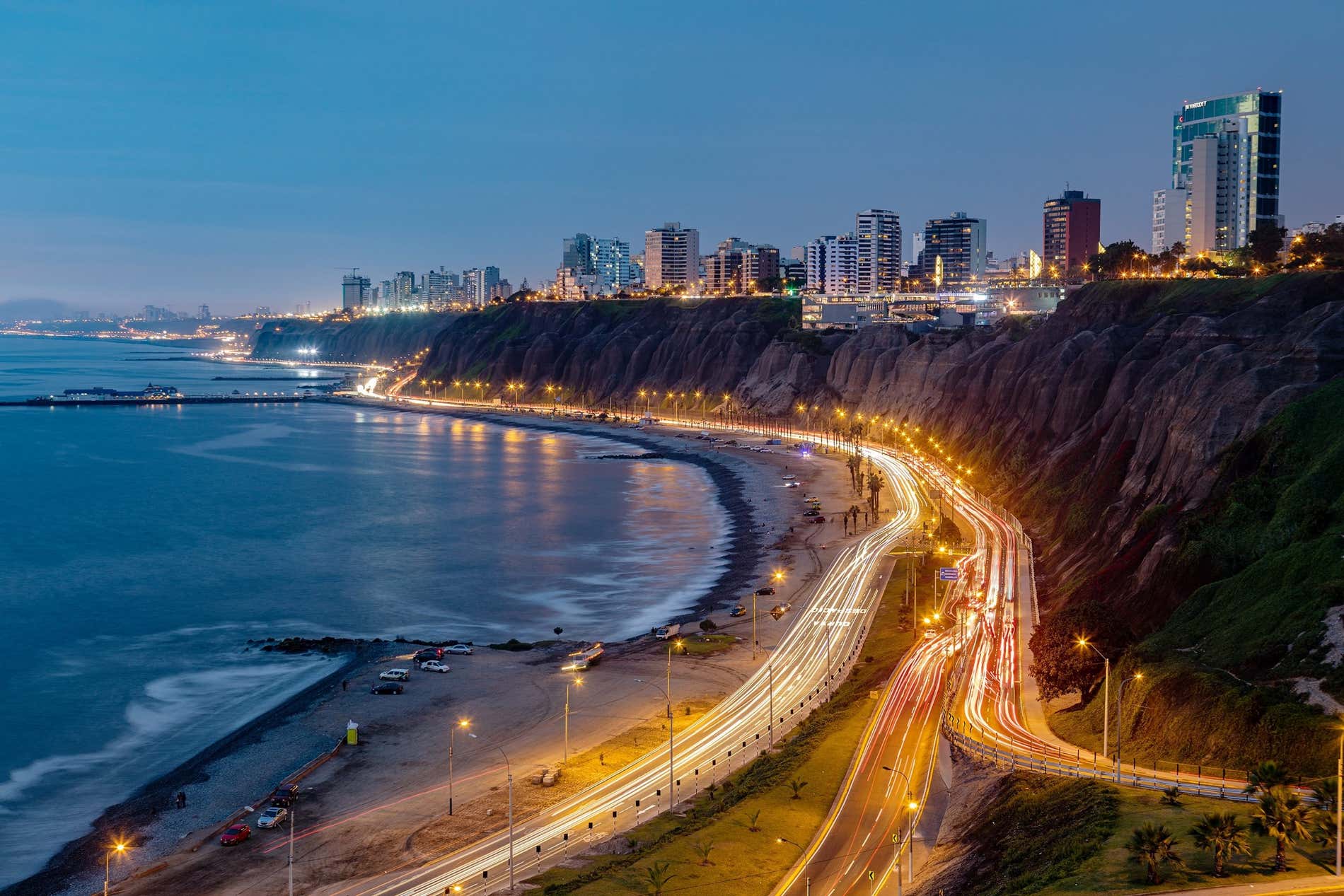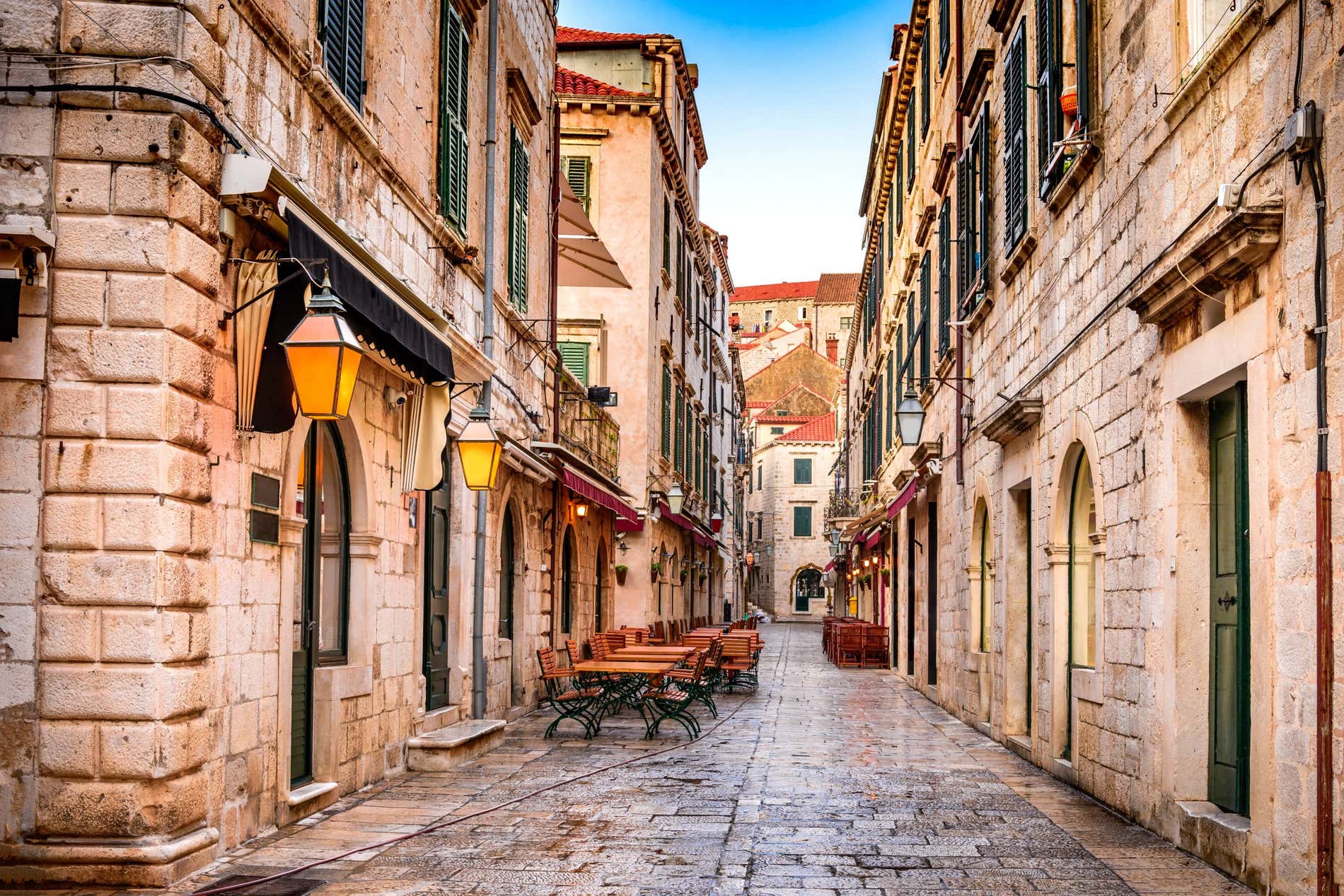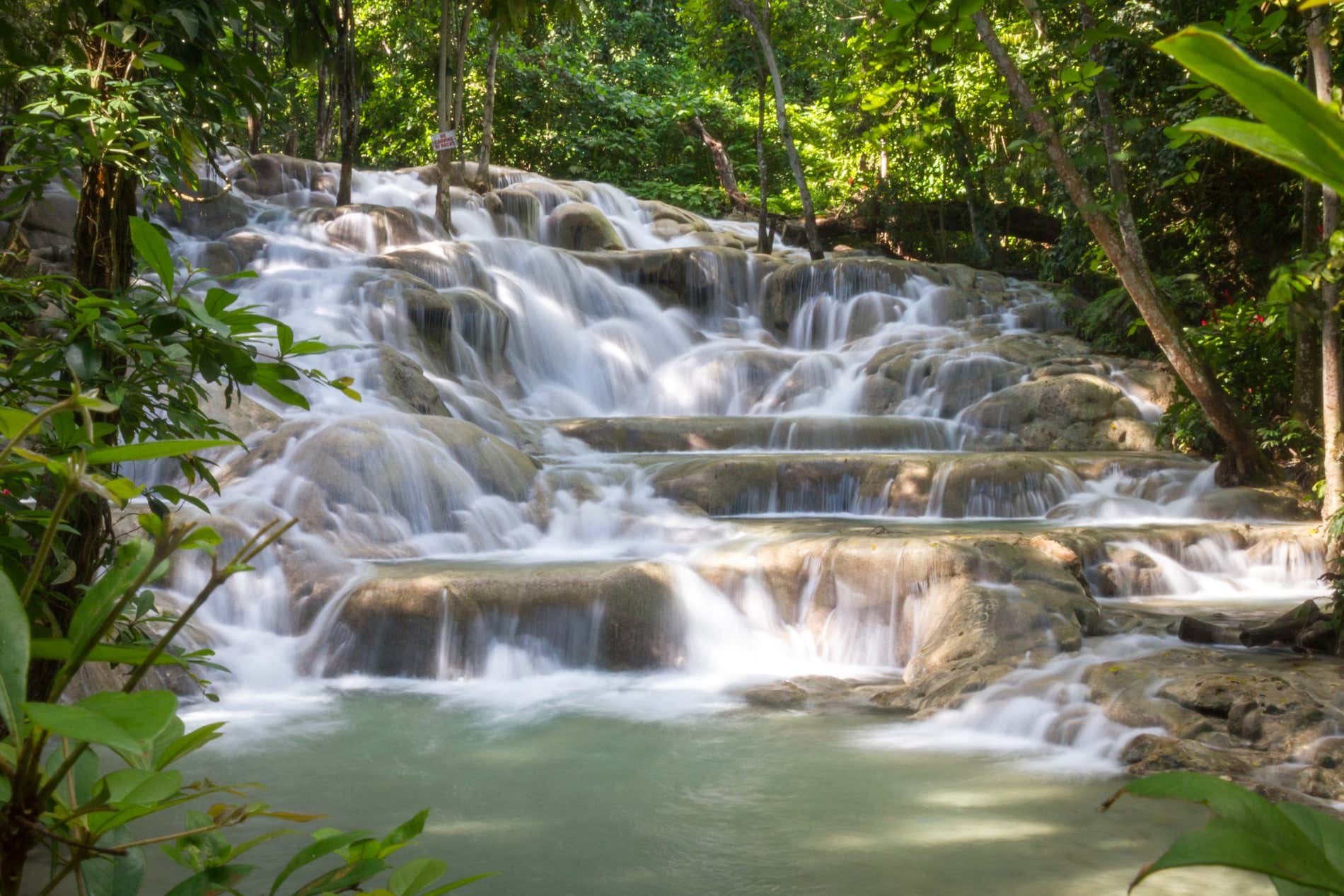What to Do in Aruba: 10 ‘Musts’ + Unique Plans in 2025
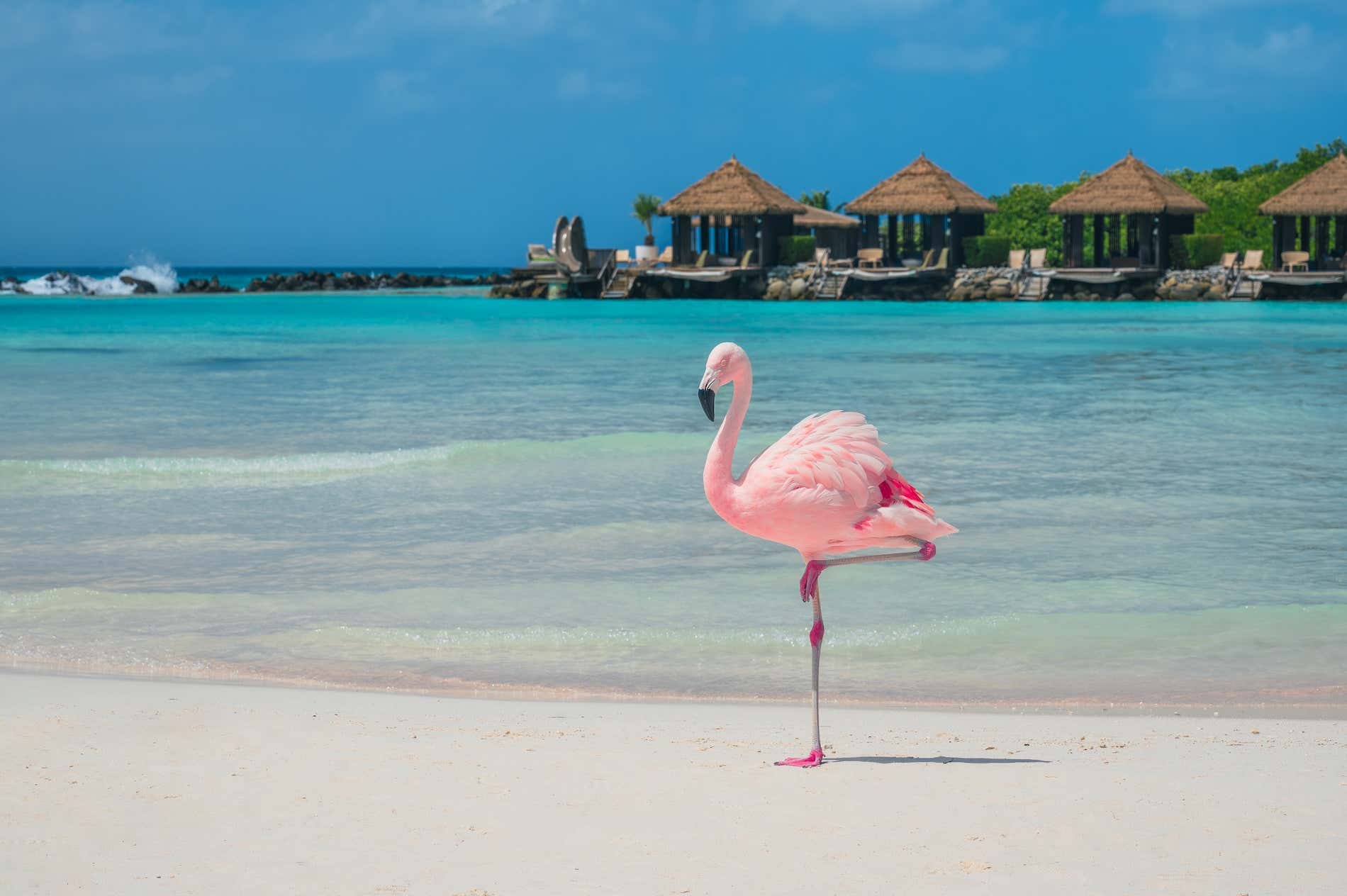
Aruba is a Caribbean destination that captivates all its visitors thanks to its landscapes that combine idyllic white sand beaches and turquoise seas, rock formations, caves, and desert areas. And do you know what to do in Aruba? The island has plans that go beyond enjoying its beaches or resorts. Today, we at Civitatis have made a list of what to do in Aruba.
Aruba is located off the coast of northern South America, near Venezuela, and like Curaçao, and Sint Maarten, this island has been under Dutch control since 1636. Today, Aruba is an autonomous country, but it is part of the Kingdom of the Netherlands. It has its own government but maintains close ties with the Netherlands, which is reflected in the language, architecture, and various cultural aspects of everyday life.
Things to do in Aruba (2025)
1. Enjoy Aruba’s Beaches
A list of what to do in Aruba can’t start anywhere else. This island is home to some of the world’s most idyllic beaches, famous for their white sand and bright turquoise waters.
Eagle Beach
Consistently picked in lists covering the ‘most beautiful beaches in the world’, Eagle Beach is long, with all of the white sand and turquoise waters you could want. Lined with hotels, Eagle Beach certainly has its fair share of resorts, but it also has plenty of free space, and despite its popularity, this is a fairly relaxed beach. After a day of enjoying the sun, there are various restaurants and kiosks to enjoy.
Eagle Beach is also particularly well known for its Divi Divi tree, which grows in a southwesterly direction due to the wind, creating a fascinating ‘swept’ appearance.
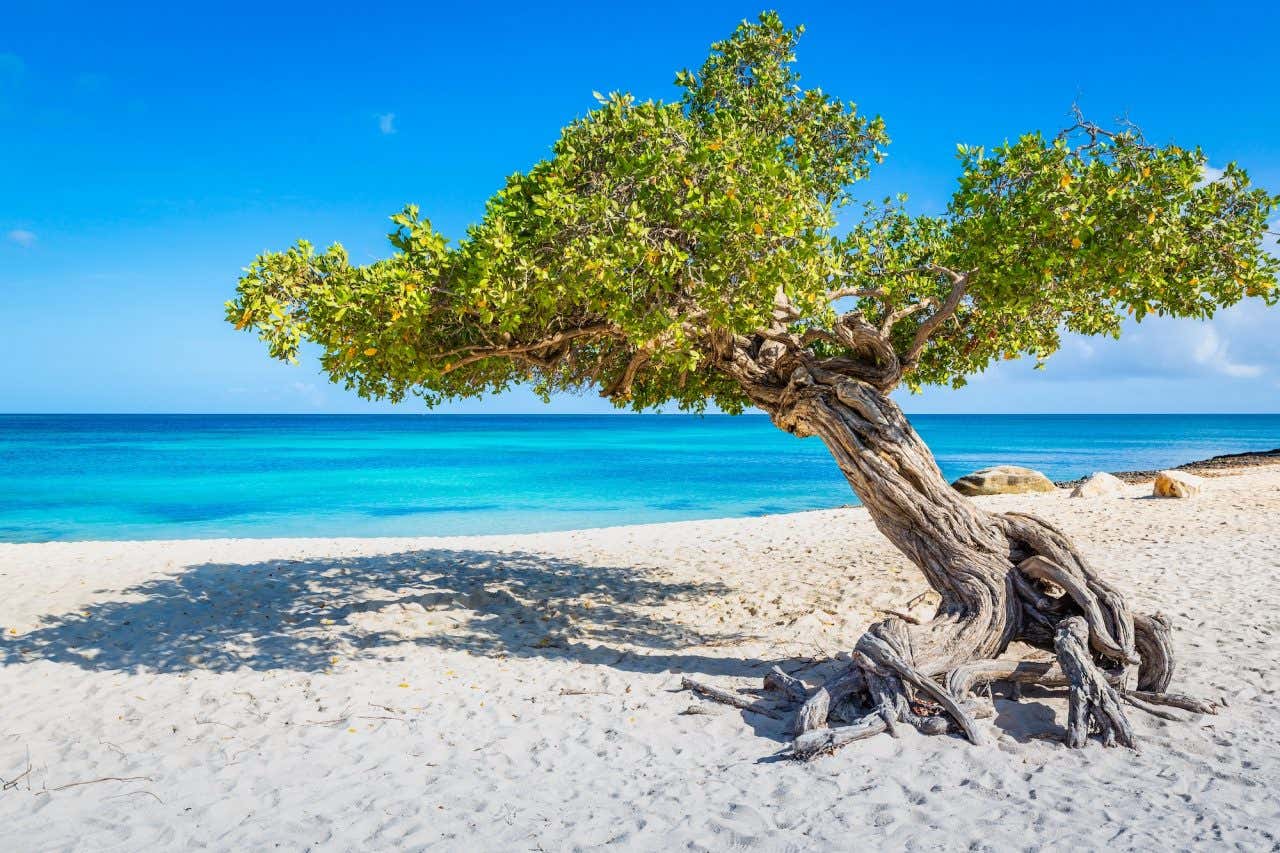
Palm Beach
If you prefer a livelier beach, be sure to visit Palm Beach, the most popular beach in Aruba, located in the North district (Noord) of the island, where you’ll also find Aruba’s largest resorts. This beach has warm, calm waters perfect for a relaxing swim, and also for water sports. Along the beach, you’ll find plenty of businesses offering jet skiing, parasailing, paddleboarding, and snorkeling, as well as cruises.
Along the beach, which stretches 2 miles (3.2 kilometers) along the shore, you’ll have your pick of kiosks, restaurants, casinos, and shops. What’s more, Palm Beach is famous for its nightlife, and you can enjoy live music, drinks, and parties at the beachfront bars.
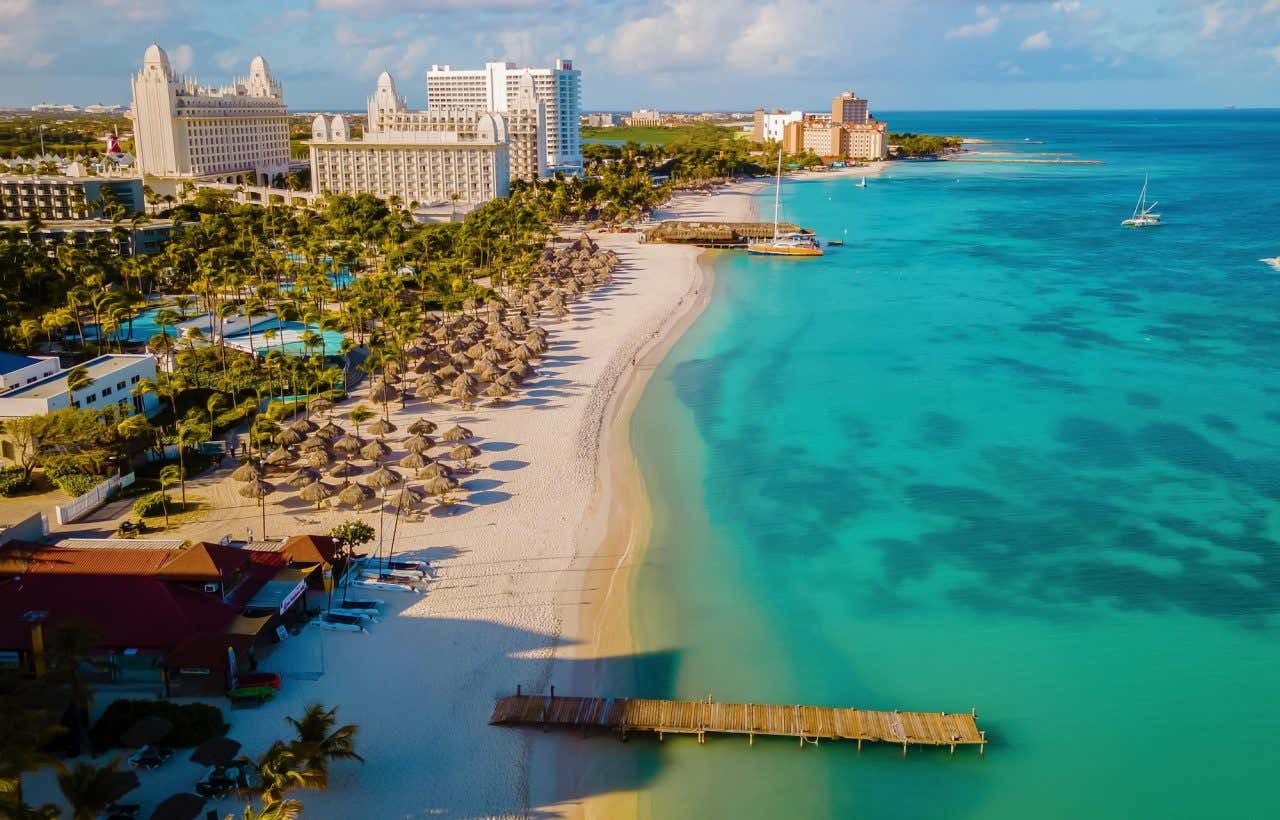
Baby Beach
Are you traveling to Aruba with children? Baby Beach lives up to its name as Aruba’s most suitable beach for little ones. This gorgeous, crescent-shaped cove is located on the south of the island and has shallow, very calm waters that are ideal for children and unconfident swimmers. It is also a great place for snorkeling!
While Baby Beach doesn’t have quite the same plentiful supply of restaurants and other facilities in the north, you’ll find some straw huts, local restaurants, and some stands renting out equipment. You can visit Baby Beach by booking this tour of southern Aruba, which passes through other famous beaches on the island as well. Don’t miss it!
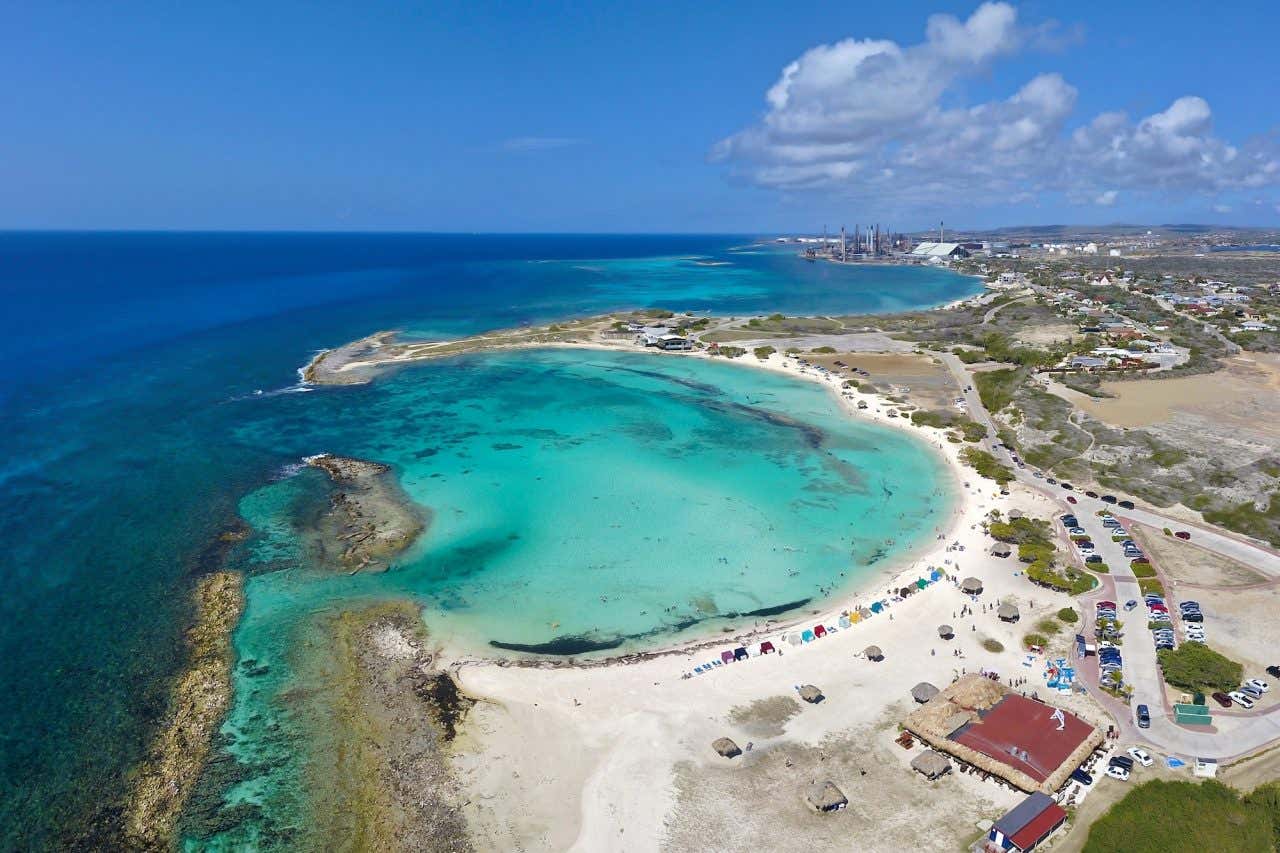
2. Enjoy a Cruise in the Caribbean Sea
Experiencing Aruba from the Carribean Sea offers a new and unique perspective on this island paradise’s beauty. On this Aruba sunset cruise, you can watch the sun’s orange hue descend on the island as it sets over the horizon. This cruise includes unlimited drinks, fresh fruit, and more snacks to enjoy.
Another option is this boat ride & snorkeling excursion, which is a slightly more adventurous option, though it still includes the food and drink of the aforementioned boat tour. A highlight of the snorkeling section of this trip is seeing the SS Antilla wreck, a shipwreck dating back to 1940.
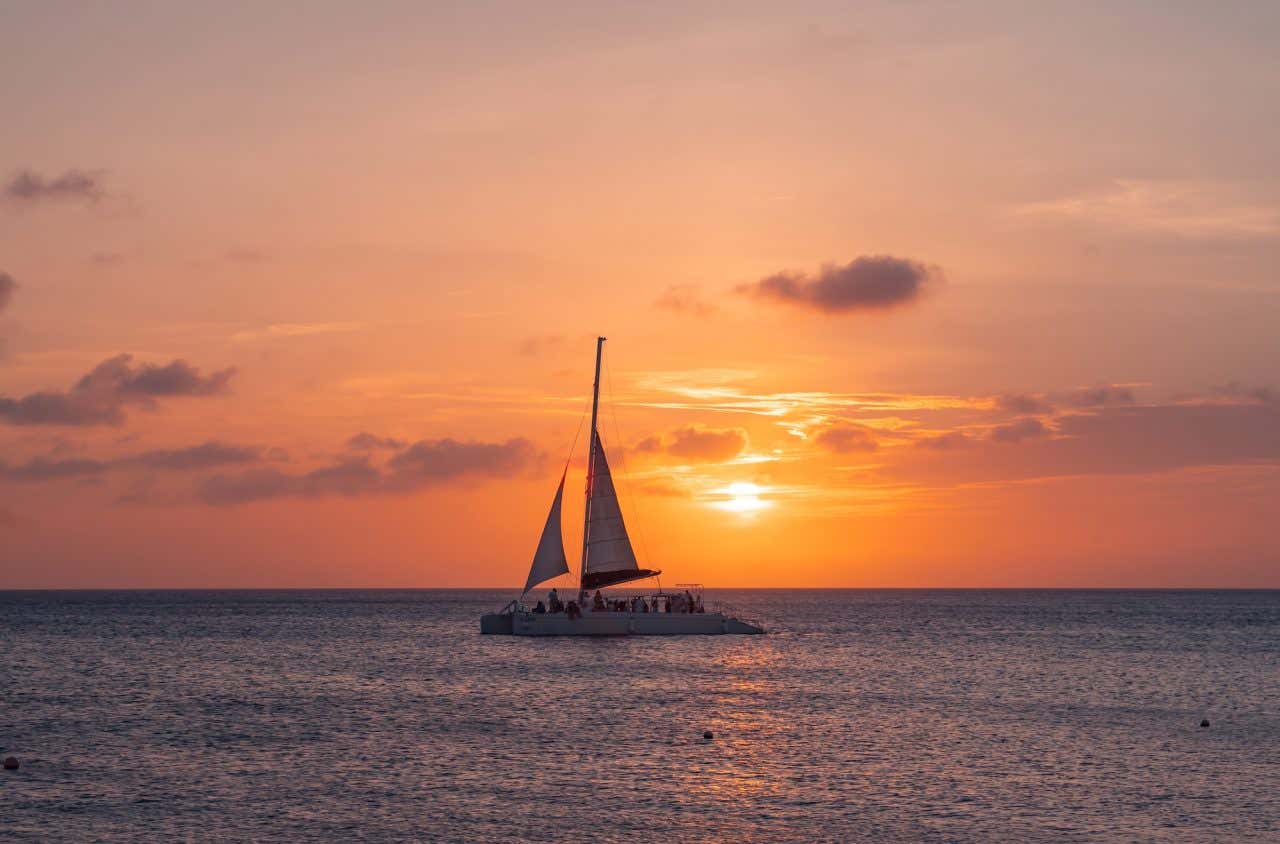
3. Explore Arikok National Park
Covering nearly 20% of the territory of Aruba, Arikok National Park is a semi-arid, rugged, remote landscape that feels a world away from the island’s busier coastal areas. This national park is filled with giant cacti and other desert shrubs, as well as unique formations of lava, limestone, and quartz create an otherworldly terrain.
Arikok is also home to an incredible diversity of wildlife, including lizards, wild goats, donkeys, the burrowing owl, and some non-venemous snakes.
However, the real star of this national park is its caves. The Fontein cave is considered to have the greatest historical significance, being home toremarkable cave paintings created by the indigenous Arawak people, who are thought to be the first people to settle on the island. Dating these paintings is difficult, but some are thought to be around 1,000 years old.
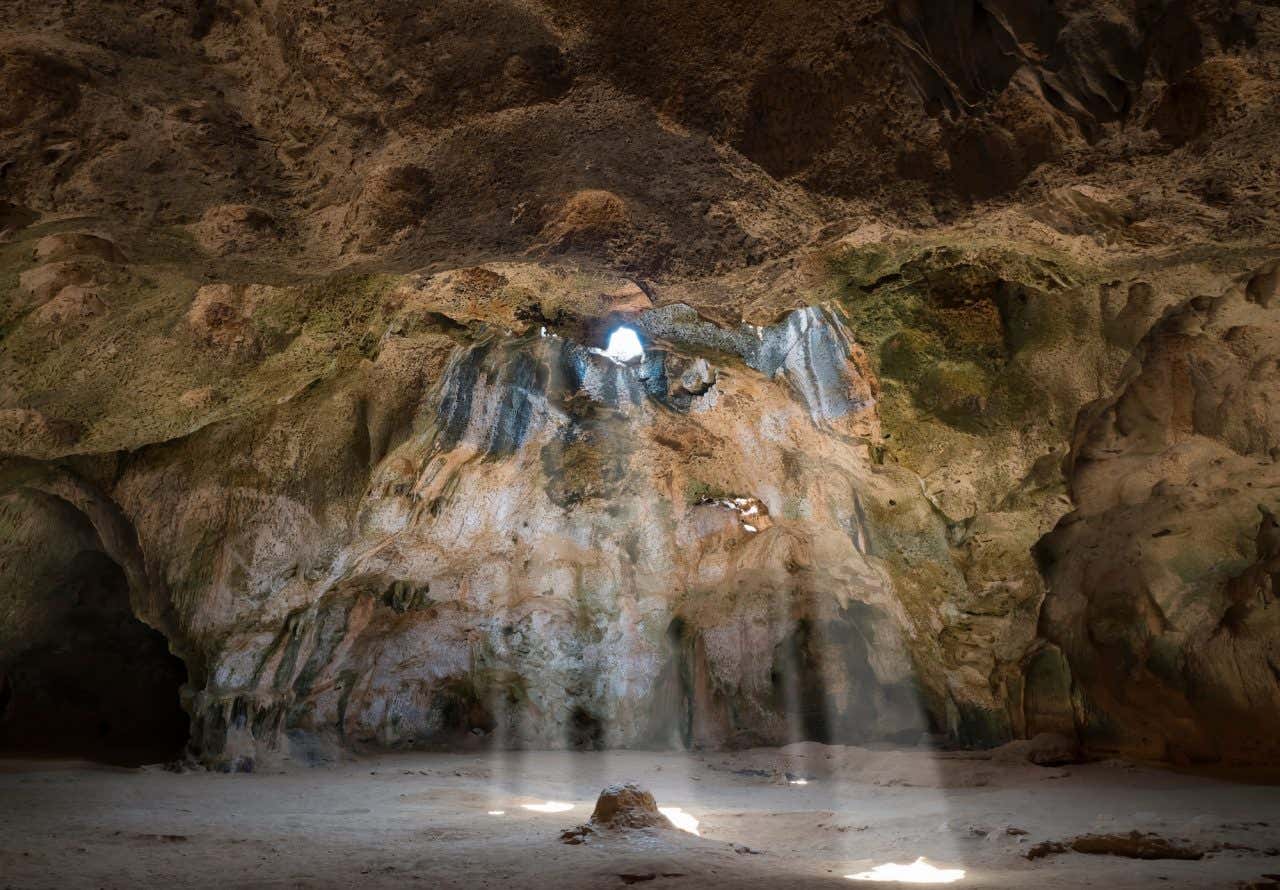
The Quadirikiri cave is larger and perhaps visually more impressive. The cave has two chambers that are lit up by natural skylights, creating an epic, ethereal atmosphere. Local legends say that the cave was used as a hiding place by lovers forbidden to be together, giving the cave a more mysterious and romantic air.
Another ‘must’ in Arikoka is the Jamanota Hill viewpoint, the highest point in Aruba, standing at 616 feet (188 meters) above sea level. From there, you will have spectacular views of the whole island. To explore the park in the most practical and fun way, you can book this buggy tour or this 4×4 tour of Aruba. If you are more adventurous, you can join us on this hiking trail through Arikok.
4. Enjoy Natural Pool (the Conchi)
Also within Arikok National Park, you can visit the Natural Pool, also known as Conchi. This natural pool was formed by volcanic rocks that create a protective barrier against the sea and create a create a calm, relaxing lagoon. The strong ocean waves crashing against the rocks and the serenity of the pool creates a dramatic contrast that is well worth making the journey.
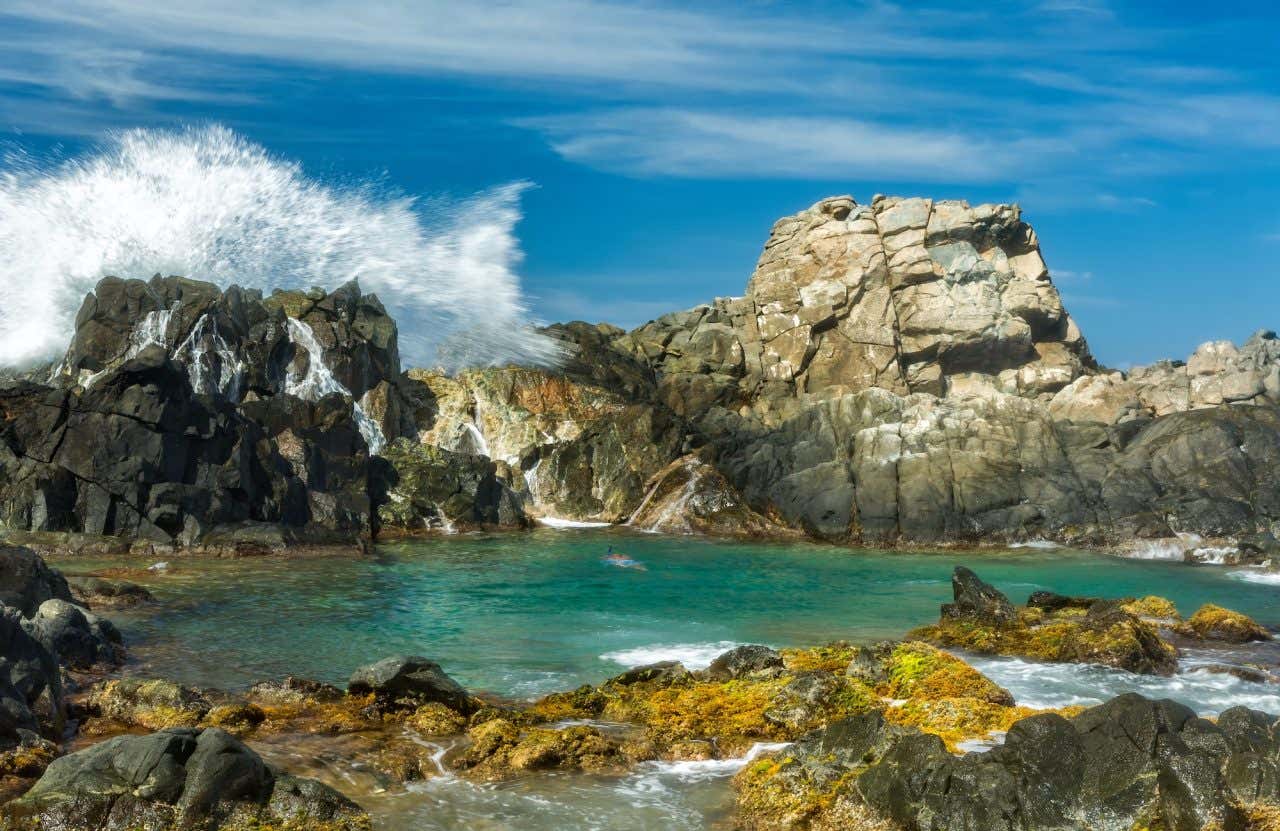
5. Visit the California Lighthouse
Another must-see in Aruba is the California Lighthouse (Faro), located on the northwestern tip of the island, in an arid landscape overlooking the Caribbean Sea. Built in 1916, the lighthouse was named after the steamship California, which sank off the coast in the late 19th century.
A popular spot for taking photos, the California Lighthouse is an icon of Aruba, and the tallest structure in Aruba. If you climb to the top of the lighthouse, you’ll enjoy a lovely view of the surrounding dunes, the urban desert, and the turquoise waters of the Dutch Caribbean.
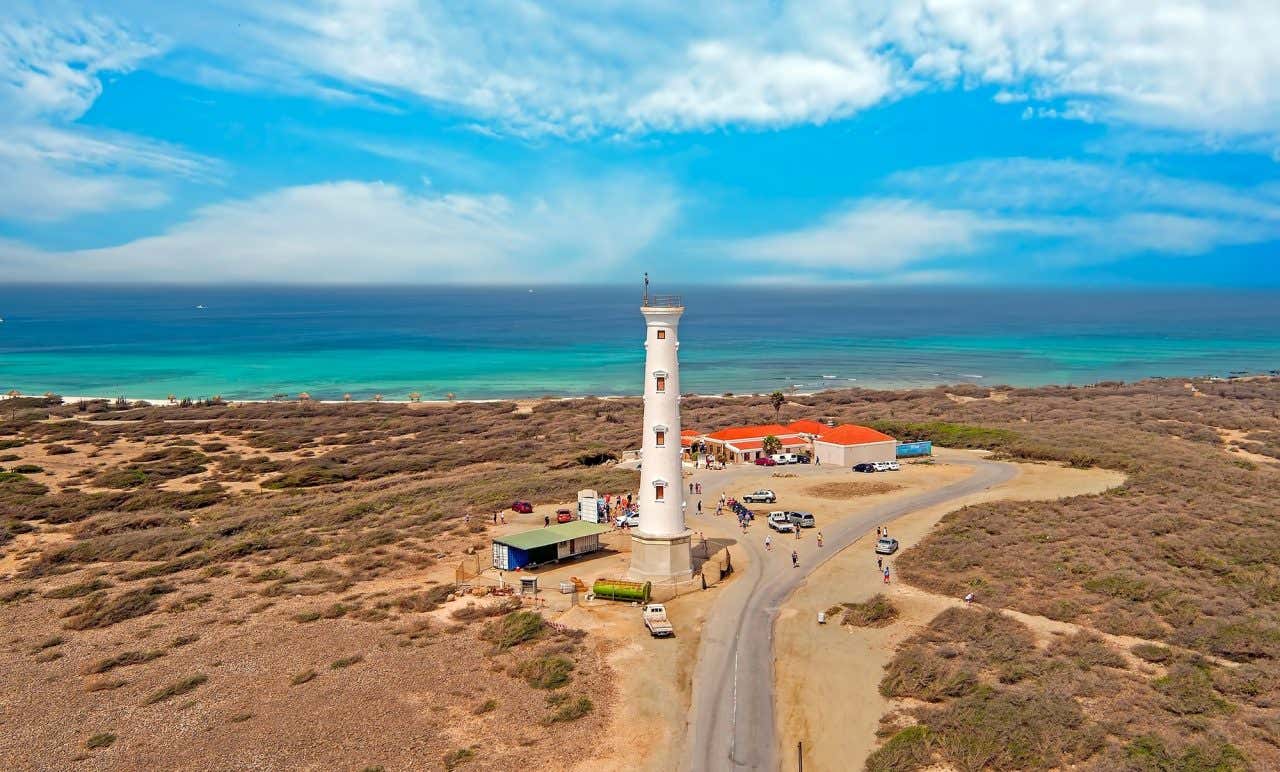
6. Walk through the Butterfly Farm
Near Palm Beach, you’ll find the tropical sanctuary for butterflies. The Butterfly Farm is a fascinating place to visit these beautiful insects.
The Butterfly Farm is a lush, beautiful garden, full of flowers, trees, and small waterfalls, creating the perfect environment for hundreds of exotic butterflies from around the world to fly freely around you.
You can learn about and observe the different stages of this insect’s life, from eggs, through caterpillars and chrysalises, to the incredible moment when they become magnificent butterflies.
For more information on schedules and tickets, visit the official Butterfly Farm website.
7. Discover the Capital City of Oranjestad
Another must while in Aruba is to spend the day at the capital and main commercial center of the island, Oranjestad. The city’s streets, which blend colorful Dutch colonial architecture with Caribbean influences, creating a really unique vibe.
In Oranjestad, check out Fort Zoutman, the oldest building in Aruba, which houses the island’s Historical Museum. Another highlight is the modern National Archaeological Museum, which brings together artifacts from the Amerindian peoples who inhabited Aruba for millennia, providing a true immersion in the island’s origins.
A good option for getting around Oranjestad is to take the electric tram, which makes sightseeing easy and passes through the main points of the city center. And best of all? It’s free!
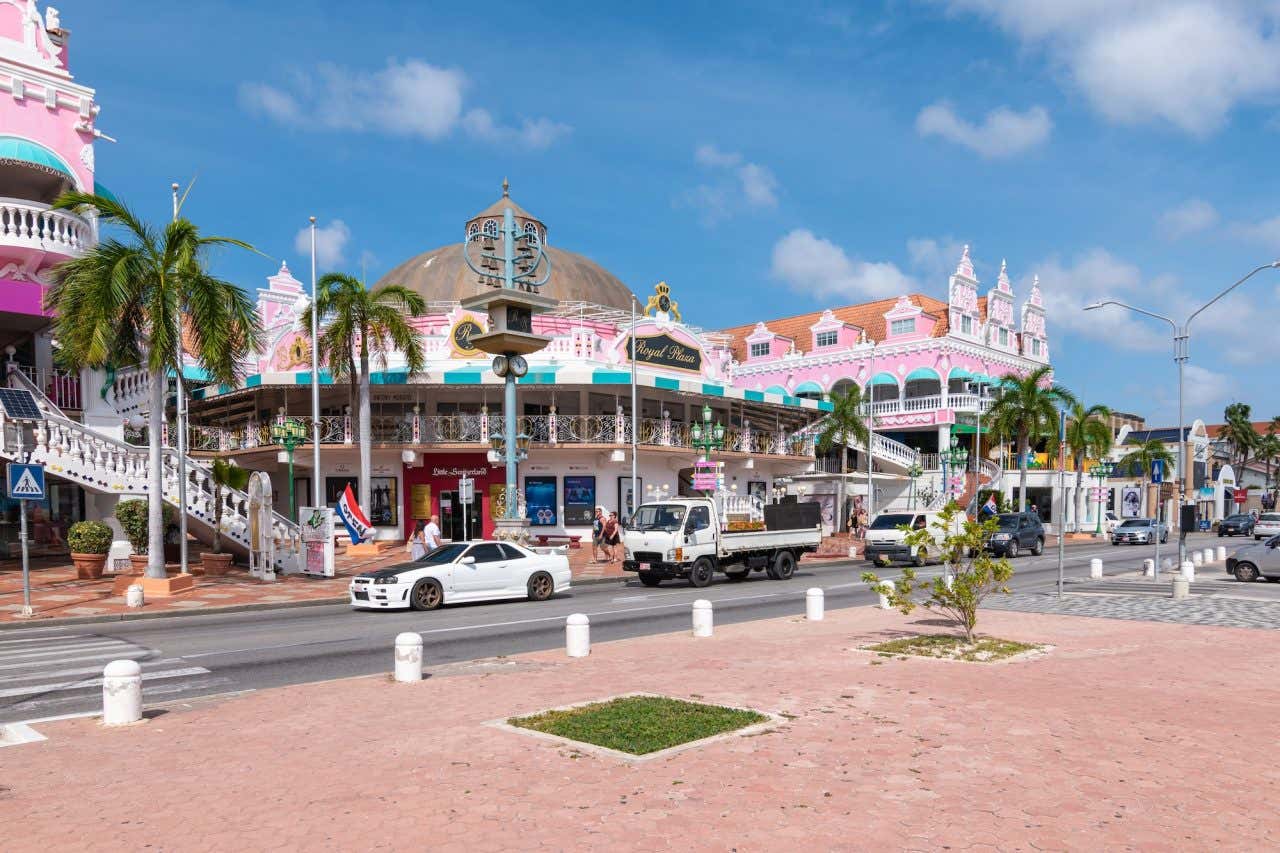
8. Visit the Alto Vista Chapel
Near the town of Noord, in the north of the island, you will find the Alto Vista Chapel, one of Aruba’s most iconic religious temples. Built in 1750 by missionary Domingo Antonio Silvestre, it was the first Catholic church on the island. While the original structure fell into ruin over time, in 1952, the chapel was rebuilt on the same site.
The path to the Alto Vista Chapel is marked by crosses representing the ‘Way of the Cross‘, and it has become a place of pilgrimage, especially during Holy Week. Its name, Alto Vista, refers to its elevated location on the island, which provides incredible panoramic views of the Caribbean Sea and the arid landscapes around it.
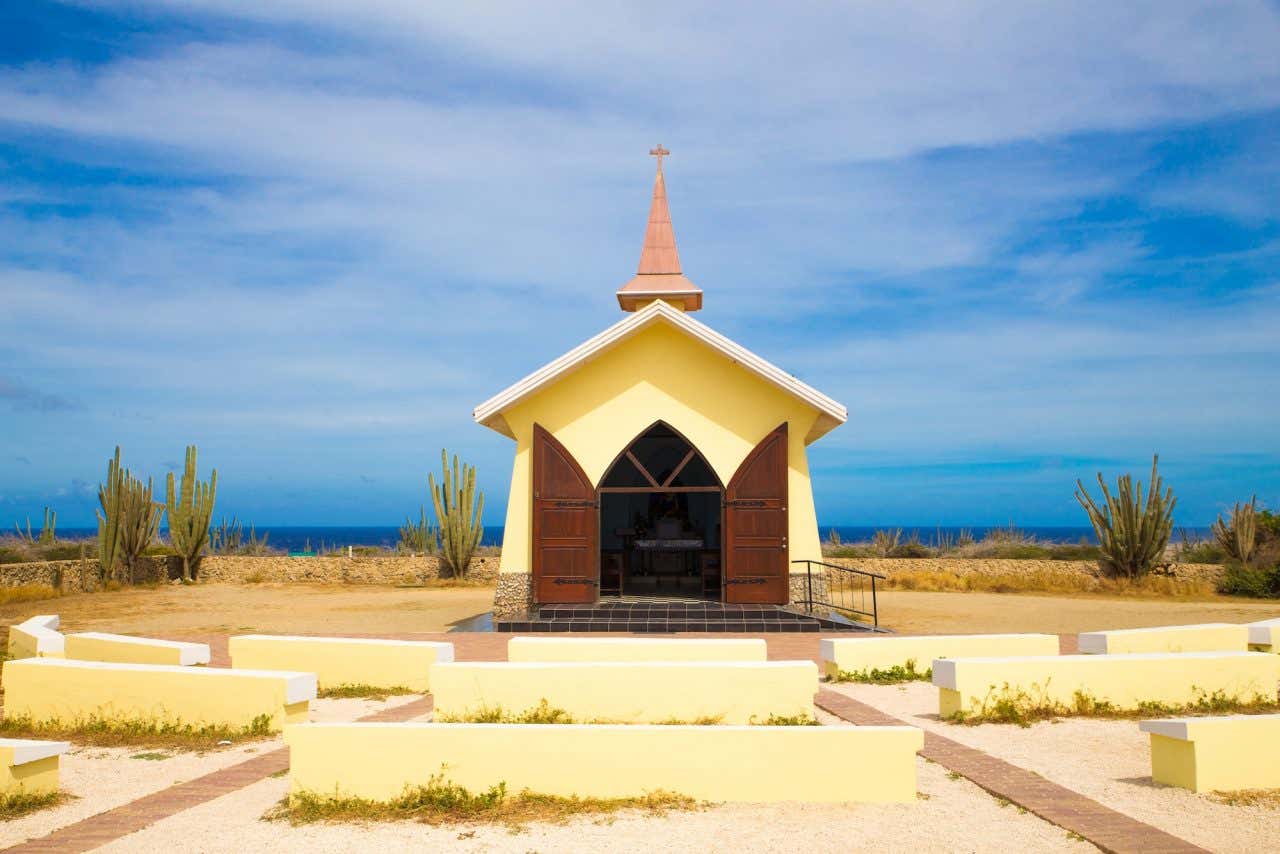
9. Try Traditional Aruban Cuisine
A list of things to do in Aruba would not be complete without mentioning the island’s delicious cuisine. Aruban food combines a wonderful mixture of Caribbean, Dutch, African, and Latin American influences, heavily featuring fresh seafood and hearty stews. In terms of seafood, lobster, shrimp, mahi-mahi, Red Snapper, Barracuda, and tuna are all widely used in grilled dishes, stews, and fried dishes.
Keshi yena is one of Aruba’s most famous dishes, generally attributed to slaves on the island in the 17th century. This dish is made with Dutch Gouda cheese stuffed with shredded meat, olives, raisins, and spices, baked until golden brown. Another popular option on the island is stobá, a thick stew usually made with beef or goat meat and vegetables.
Dutch Pancakes are another very popular dish, which is generally eaten for breakfast with apple, banana, and pineapple, or for dinner with savory additions like salami, cheese, and tuna.
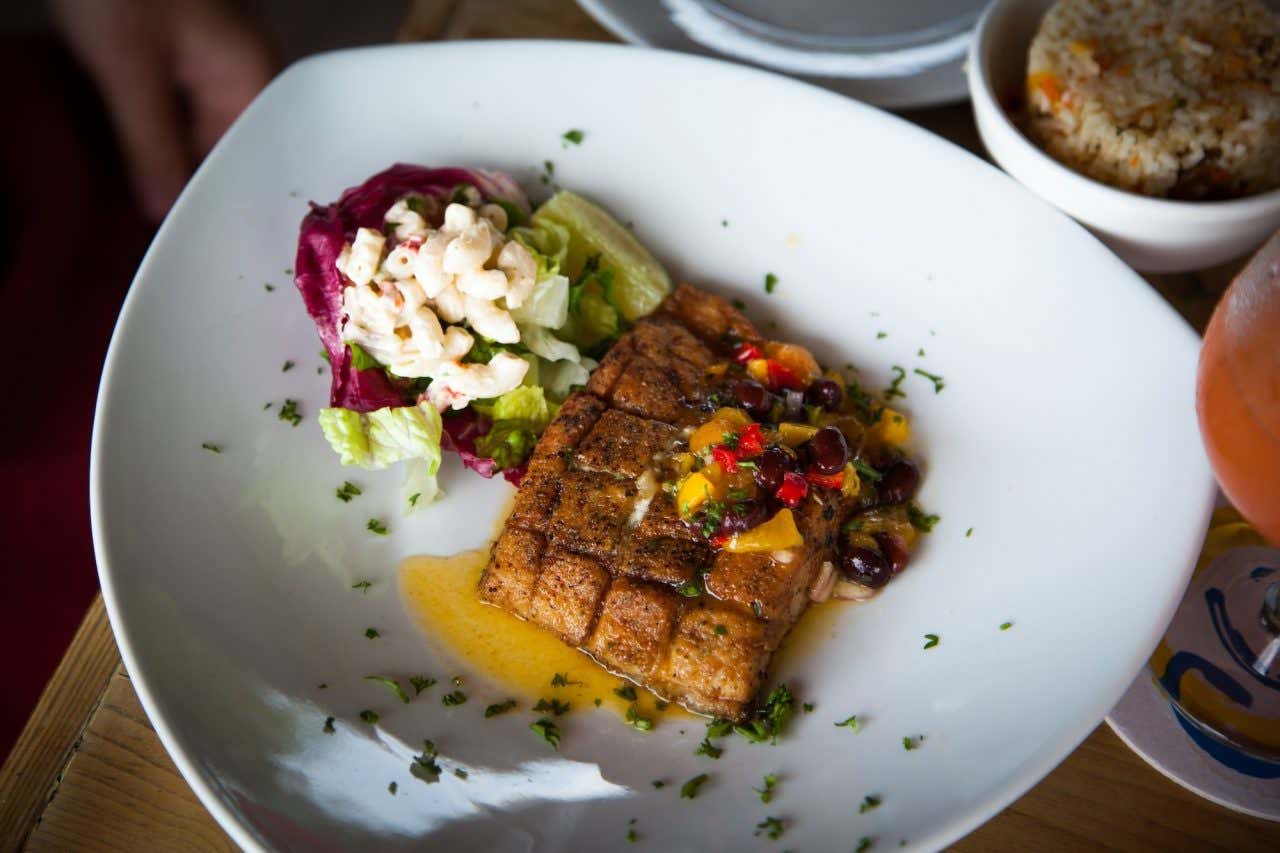
Tips to Enjoy Aruba to the Fullest
What currency is used in Aruba?
The official currency of Aruba is the Aruban florin. However, the US dollar is widely accepted throughout the island, in hotels, restaurants, shops, and even on buses. Even so, we recommend carrying a small amount of cash for purchases in smaller establishments, tips, or small purchases.
What language is used in Aruba?
In Aruba, the official languages are Papiamento (a Creole language with Portuguese, Spanish, Dutch, English, and African languages) and Dutch. However, most of the population also speaks English and Spanish fluently, especially in tourist areas.
How do you get from Aruba International Airport to your hotel?
To get from Reina Beatrix International Airport (AUA) to your hotel in Aruba, you can call a taxi, rent a car directly at the airport, or take the public bus (Arubus). However, keep in mind that the latter option requires a walk to the nearest stop, which can be difficult if you have luggage.
Therefore, the best option is to book a transfer with Civitatis, which can take you from the airport to hotels in Oranjestad, Palm Beach, and Eagle Beach. You will be taken directly to your hotel and won’t have to worry about a thing. In addition, you can also book your return to the airport at the end of your trip.
We have reached the end of our list of what to do in Aruba. Now that you know the best plans on this island, a little piece of the Netherlands in the Caribbean, you can start planning your trip and book the best activities in Aruba with Civitatis.





